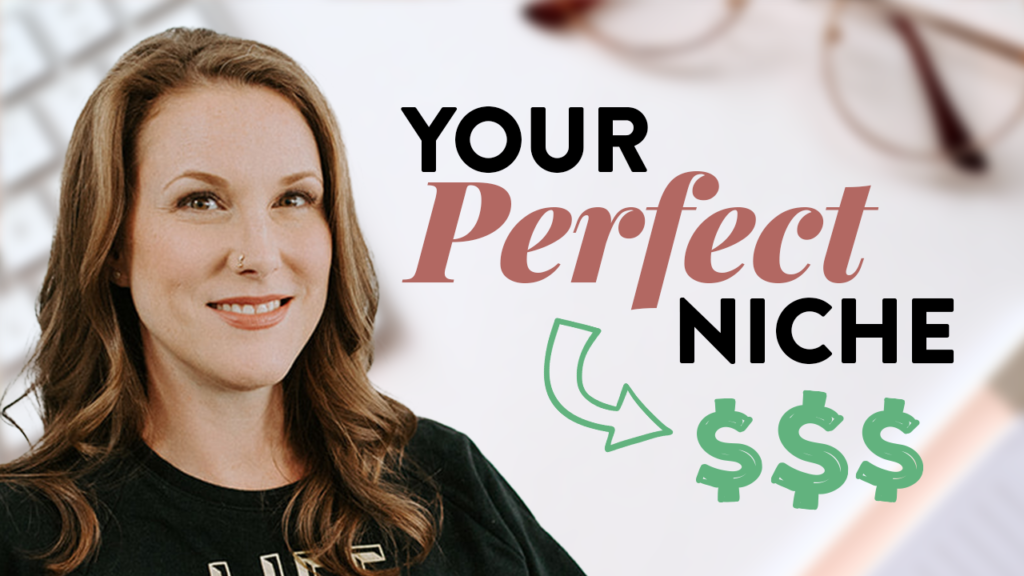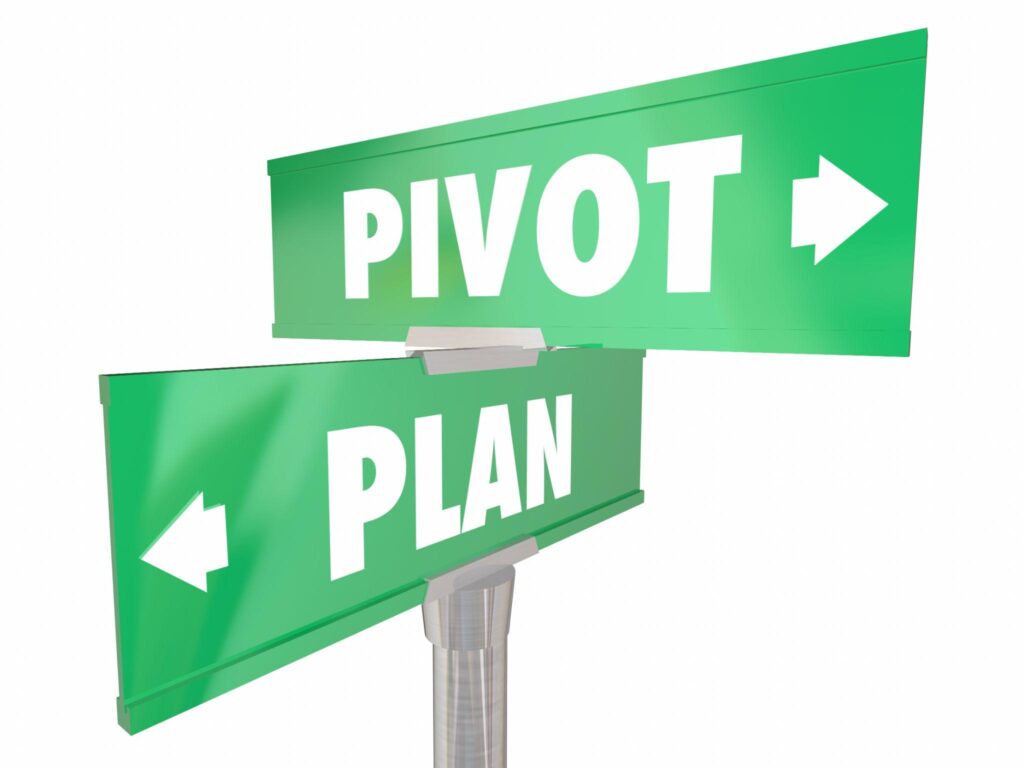(This post contains affiliate links, which means—at zero cost to you—I will earn a small commission if you click through and make a purchase. Thank you for your support!)
When I started my online business journey in 2014, my initial investment was $100—which may seem like a minimal amount, but when you’re making about $49k a year and are $45k in debt (like I was) it sure did feel like a lot!
Since making this initial investment, I’ve seen a 7-figure increase in my net worth (cue the choir!) and I’ve learned a few lessons that I’d like to share with you in hopes that they’ll help you on your own online business journey.
I’ll share:
- The exact path I took from my initial investment of $100 into my first successful online business venture and how I grew it to $1,000,000
- How long it actually took to get to $1,000,000
- 14 lessons I’ve learned on my online business journey that can help you on your own path
Watch the video or read the main points below.
My Path from $100 to $100,000,00
The Journey Begins (2014)
Back in 2014, I was an art director at an ad agency and I really wasn’t loving life. I was making about $49,000 a year and I was around $45,000 in debt. That kind of math doesn’t look great.
I really wanted to start making a lot more money, not just so I could pay off that debt but because I wanted to live more of the lifestyle I wanted. I didn’t want to have a ceiling on my income and, more importantly, I wanted FREEDOM! I didn’t want to work for anyone else.
Exploring Side Hustle Options
Because I was so unhappy at my job as an art director and wanted to be my own boss and in charge of my own destiny, I decided to start exploring side hustles.
After reading Tim Ferriss’ book, The 4-Hour Work Week, I decided to launch my own business, Easylicious Gluten-Free, a gluten-free meal planning service. This turned out to be a TERRIBLE idea! The business flopped before it even got off the ground.
Why?
I didn’t properly validate my business idea.
To learn more about how to validate your own business idea so that you don’t make the same mistake I did, check out “How to Find a Profitable Niche and Validate Your Business Idea.”

Discovering Kindle Direct Publishing (Late 2014 / Early 2015)
Even after the failure of Easylicious, I was determined not to quit. I picked myself up and continued to look around for more side hustles ideas.
During my search, I came across a free guide that showed how to make money publishing nonfiction books on Kindle Direct Publishing (KDP).
The business model was simple:
- do some niche/keyword research to see what people are searching for on Amazon
- hire a ghostwriter to write your book
- publish
I decided to give it a try. After doing some research, I hired a ghostwriter for $100 to create a recipe book for me (a paleo diet book for vegetarians).
In the first month, I made $100. Woohoo! Not exactly a windfall, BUT this proved to me that the model worked! I took that $100 and reinvested it into creating a second recipe book.
By the end of the second month, I had made another $100. I kept reinvesting each $100 so that I could scale my business. It was also around this time that I decided to invest in a KDP course that helped me fill in some of my own knowledge gaps. It was definitely worth the money.
Getting to The Next Level (Late 2015)
While I was seeing some success with KDP, I wanted to break into the next level. I had heard that romantic fiction would be the “next big thing” so I decided to check it out.
I invested $1000 into a 6-week coaching program for publishing romance novels. This was a significant investment for me because I still had a TON of debt, but I went ahead and did it.
Romantic fiction turned out to be a huge boost for me. It was really the first big income explosion I experienced. I increased my earnings from about $1000 a month to $4000. The problem was that I was still having to spend quite a bit of money getting someone to create these books for me, so while I was earning $4000 gross, I was really only netting about $2000 a month after paying writers.
Around this time, a good friend of mine (and fellow YouTuber), Kelli Publish, told me about low-content publishing. While I thought it sounded great, especially given my background in design, I decided that I would keep it in my back pocket and perhaps give it a try later. I was really determined to make the fiction books work.
I happened to mention low-content publishing to a friend of mine, who decided to give it a try. After just a few months she was making several thousand dollars a month! To be honest, I was a little mad at myself for not going all in, too. I’d already been at it for 2 years at this point, and my friend swoops in and outpaces me in a matter of a few months?! No way was I going to let that stand!
A New Chapter (2017)
At the end of 2016 I was laid off from my advertising job. Starting January 1, 2017, I finally had time to really work on my business so I decided to ditch the fiction and go all-in with low-content publishing. By doing this, I cut out the middleman (the writers I was hiring), so the profits were all mine.
The results? (Drum roll, please)
I had my first six-figure year by the end of 2017!
In 2018 I had a $200k year, which was even better!

Low-Content Profits Academy (2019)
By 2019, enough people had noticed my success with low-content books and had started asking me my secret. I decided that teaching people how to create the same success I had experienced with low-content publishing would be another great business model.
With this in mind, I started my blog and YouTube channel to teach people low-content publishing. As I was creating content, I was also working on creating a course to teach people the same thing. I launched my course, Low-Content Profits Academy, in late 2019.
Since the beginning of my online business journey, I’ve made:
- about $500k in book sales on KDP
- over $500k in sales from my course
- tens of thousands of dollars from affiliate sales
- tens of thousands of dollars from YouTube AdSense
How Long Did This Take Me?
It’s taken me roughly 6.5 years to get to $1,000,000 after my initial $100 investment. Some might think it’s been a pretty swift journey, while others might think that’s a long time. Personally, I think that’s a reasonable amount of time, particularly given the fact that two of those years were spent working full time AND I had two children in the meantime.
14 Lessons I Learned That Helped Me Grow My Net Worth to 7 Figures
Now that you know the path I took to get to a 7-figure net worth, let me share 14 lessons that I learned along the way, with the hope that these lessons can help you on your own online business journey.
1. Make the Decision to Stop Trading Time for Money
You’ll never get rich trading your time for money. Simply working and saving won’t cut it. You don’t need a fully fleshed-out plan when you decide to start a business, but you do need to make that mindset shift that you’re going to stop trading hours for dollars.
2. Seek Out Mentors and Community
Whatever you hope to accomplish, there are others who have gone before you and succeeded. Seek them out! You don’t need to have a formal mentor/ mentee relationship, but following them on social media, reading their newsletters, and consuming their content can help you learn from them. Some of the people I follow are:
Additionally, participating in communities such as Facebook groups and membership forums is a great way to build relationships with like-minded people.

I have two Facebook groups for low-content publishing. One is my free group, Low-Content Profits. The other is for paid members of my course, Low-Content Profits Academy. Each group consists of several thousand like-minded people looking to help each other as they learn low-content publishing and grow their own businesses.
3. Continuously Invest in Yourself AND Your Business
Unless you love the idea of your path taking 10 times longer than it needs to, you’ll need to invest in yourself and in your business. There are people out there who have already done the thing you want to do, so trying to figure it all out on your own will only lead to frustration and lost time.
Invest in quality:
- courses
- books
- memberships
- mastermind groups
More importantly, implement what you learn. You can take ALL of the courses and read ALL of the books but unless you actually apply what you learn, it won’t help you.
Once you start making money, resist the urge to blow through it. Instead, reinvest it in ways that can help you reap more rewards later. Whether you invest it in more courses, in coaching, or in a membership, the investment will more than pay off in the long run.
Another way you can invest in your business is by hiring a team. Hiring a team has given me about 30 more hours a week to work on my business. Anytime I’ve invested in outsourcing tasks I’ve seen growth in my business, so it’s well worth the money!
4. Never Invest More Money Than You’re Willing to Lose
As I mentioned, when I made the initial $100 investment into building a business, I was $45k in debt. It didn’t feel great parting with any money at that point, but I knew if I lost the $100, I wasn’t going to lose sleep over it. I was comfortable with investing $100.
Your initial investment amount may differ from mine—maybe more, maybe less. Just remember that not all investments pay off, so understand that you’re taking a calculated risk and be okay with losing that amount if it doesn’t pay off this time.
5. It’s Okay to Pivot
While publishing fiction was doing okay for me in the beginning, I realized I’d have to pivot to something else if I wanted to take my business to the next level. It wasn’t until I moved from fiction to low-content publishing that I started seeing the results I was hoping for.
It can be hard sometimes to know when to stick it out and when to move on. For more help knowing which decision is right for you, check out “Knowing When To Quit or Persevere.”

6. Always Look for Opportunities
Looking for opportunities isn’t about jumping from idea to idea; it’s about building on what you’ve already created. Once people started asking me questions about how I was enjoying so much success with low-content publishing, I saw the opportunity to create my Low-Content Profits Academy course. Look for ways you can expand on what you’ve already created.
7. Recognize Your Own Value
There are things you can do that no one else can. You probably take those things for granted, assuming that they’re as easy for everyone else as they are for you. This isn’t true.
We’re all good at different things. What comes naturally to you might seem like magic to someone else.
Learn to value yourself and don’t discount your unique talents, skills, and abilities. You don’t need to be an expert to build a business; you only need to know a little bit more than someone else.
8. Be Consistent
I’ve been plugging away at my business almost every day since 2014. That doesn’t mean I always have huge chunks of time to devote to work, but the key is that I show up every day.
I used to squeeze in time for my business around my full time work schedule; then around my baby’s nap schedule. Be consistent and good things will happen.
Success is the sum of small efforts, repeated day in and day out.
Robert Collier
9. Be Okay with Uncertainty
Starting your own business can feel scary. You don’t know whether your time and money investments will pay off in the end.
When I was starting my business I was taking calculated risks, so I had a good idea that I would see some success but I could not know that with 100% certainty.
Coming to peace with uncertainty will help you stay focused on the things within your control.
10. Be Willing to Step FAR Outside of Your Comfort Zone
On my journey I found that every time I leveled up my business, I had to do some things that were outside of my comfort zone.
For example, being in front of a camera doing YouTube videos and hosting live webinars isn’t something that comes naturally to me. In fact, I was scared sh*tless to do these things for the first time! If you want to grow, however, you MUST be willing to do some scary things that are outside of your comfort zone—sometimes quite far outside.
11. Take It on the Chin
Failure and disappointment are inevitable parts of life. Everyone fails, but if you want to eventually succeed you’ll need to roll with the punches. Feel the pain, learn the lessons, and then quickly move on.

12. Play the Long Game
I get impatient just like anyone else, but I generally don’t concern myself with how long it’s going to take for me to get where I want to go.I know that if I’m consistent and take steps every day to improve, I’ll get there eventually. Be in it to win it!
13. Luck
I’m going to be real with you: there’s always a certain amount of luck involved in these things. No one is 100% self-made. Anyone who says that is probably overlooking all of the people who have offered advice or other types of support along the way.
While luck does play a part in success, I do believe that the harder we work, the easier it is for those opportunities that appear to be “luck” to find us.

14. If You Can Make $1, You Can Make $10, $100, $1000, and More!
This is just simple math. If you can learn how to make $1, you can use the same basic principles that helped you earn that $1 to earn $1,000,000. If you continue to show up, learn, pivot when necessary, and seek new opportunities, you’ll be well on your way!
Success isn’t linear. It goes up and down. I like to imagine it like a stock market chart: there are peaks and dips, but there’s a slow increase over time. Sometimes you need to zoom out on your own path to see that you’re actually making progress.
It’s important to remember that each person’s online business journey is unique, and the rate and amount of success will vary from person to person. Don’t “compare and despair” because someone seems to have achieved success before you. Comparing your “chapter 1” to someone else’s “chapter 10” will only discourage you. I still fall into this trap sometimes—I know it can be hard not to!
If you’re an aspiring online business owner who needs a helping hand getting things off the ground, download my free guide, The 4-Step No Time to Waste Online Business Start Up Blueprint. This guide takes you through ALL of the steps to starting an online knowledge-based business, from idea generation all the way through to creating an offer and marketing it to your audience, so definitely check that out!
FREE GUIDE: 7 Places To Share Your Lead Magnet Opt-in by Amy Porterfield
FREE GUIDE: 4-Step “No Time to Waste” Online Business StartUp Blueprint
MORE ONLINE BUSINESS STARTUP TIPS: https://www.rachelharrisonsund.com/
FREE PRIVATE FACEBOOK GROUP: Rachel’s Sandbox
